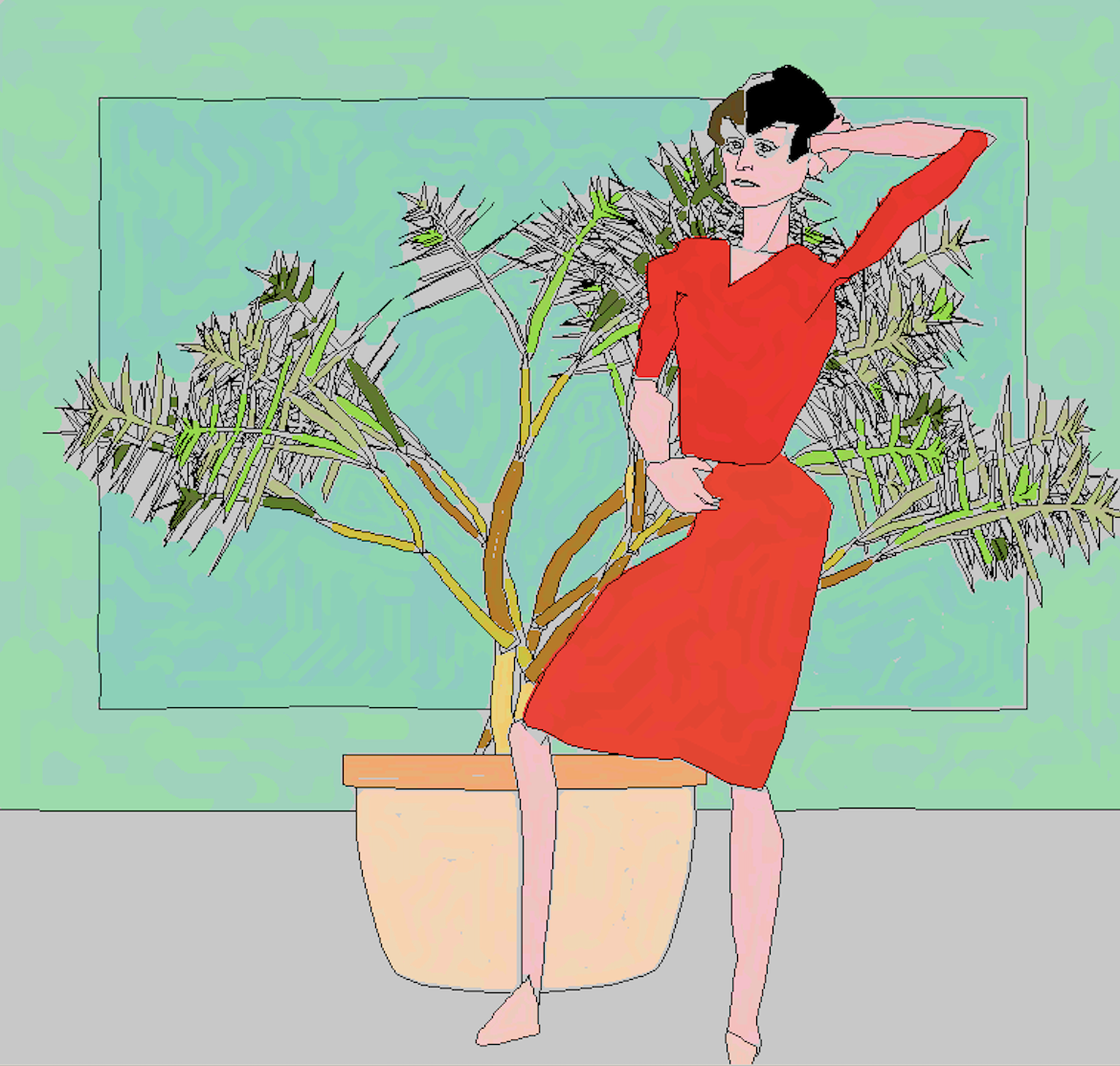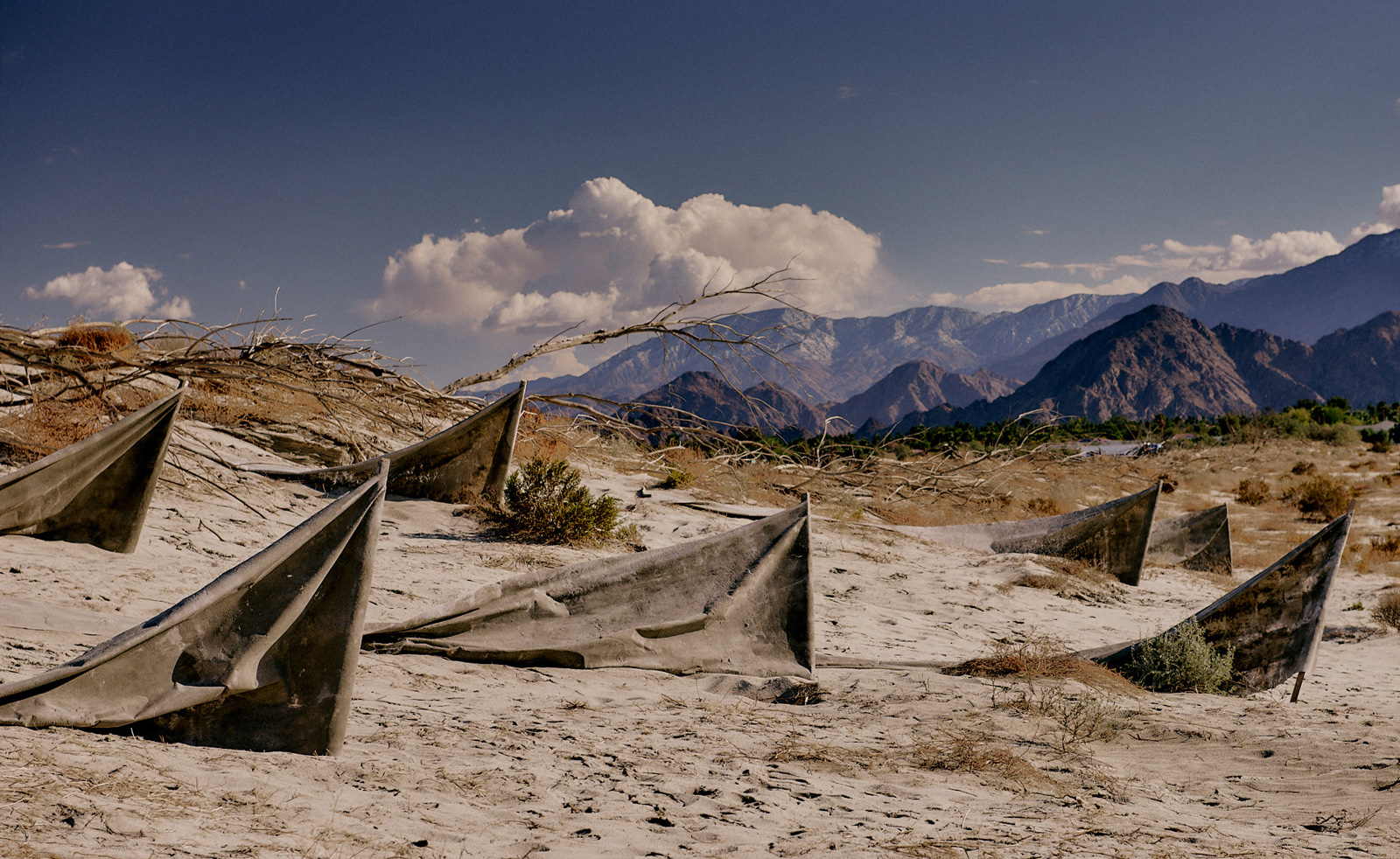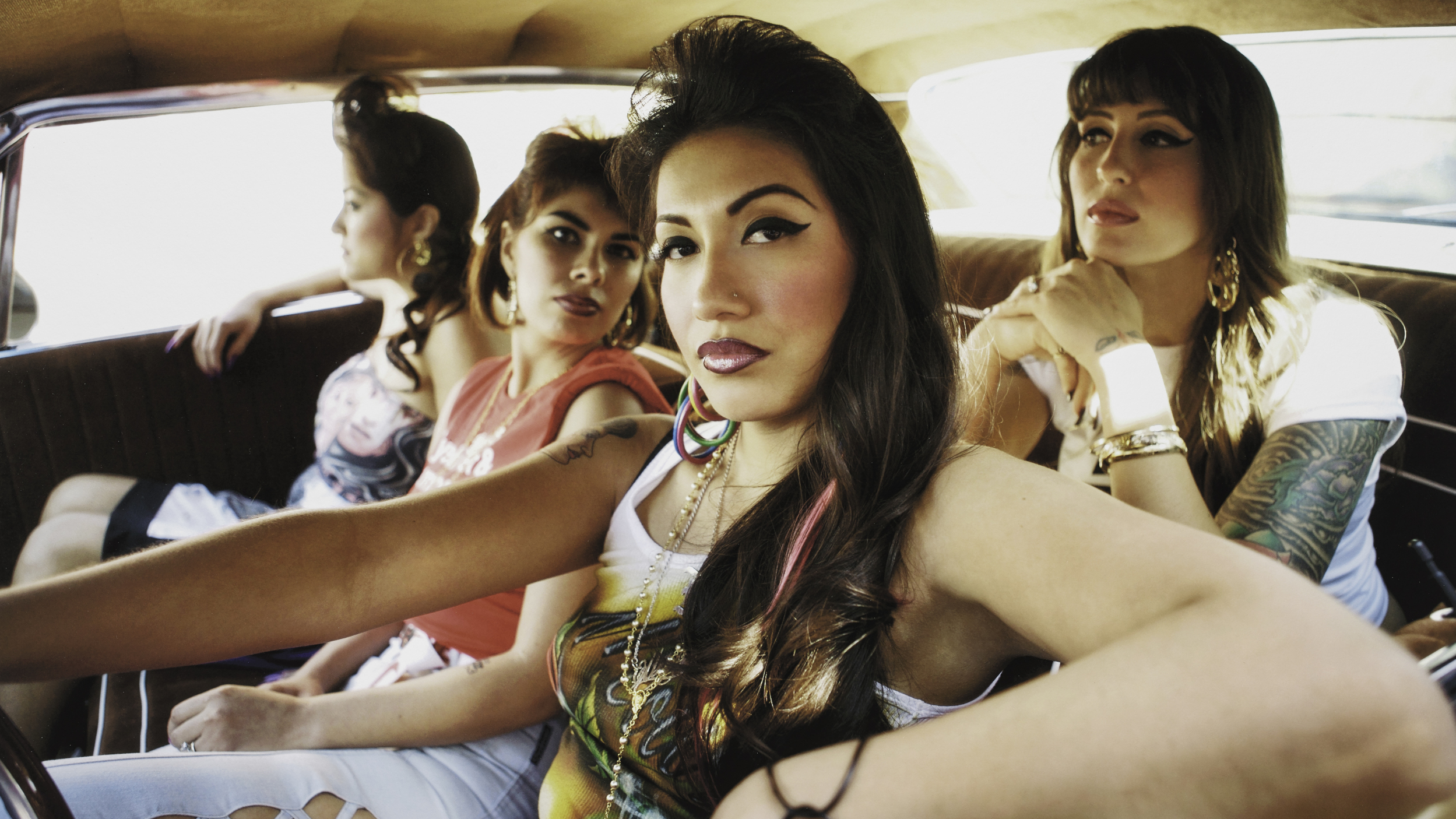The Whitney plots Harold Cohen’s artistic AI adventures
‘Harold Cohen: AARON’, at the Whitney Museum of American Art celebrates the artist’s software – the earliest AI program for artmaking – as an artwork in its own right

To dismiss the role of the artist in the increasingly frenzied conversations around artificial intelligence (AI) is to bypass swathes of art history which put man on equal footing with machine.
For artist Harold Cohen, who developed the first AI artmaking programme in the late 1960s, AARON, the resulting creativity stemmed from an equal collaboration between the programme and the programmer. Drawing directly from rules coded personally by the artist – unlike today’s software, which gathers information from existing imagery, guided by prompts from the user – Cohen’s AARON machine software is an artwork in its own right.

Harold Cohen, AARON KCAT, 2001. Screenshot. Artificial intelligence software. Dimensions variable
This early creativity and potential that Cohen spotlighted in AI is now being explored by an exhibition at the Whitney Museum of American Art, New York, inviting visitors to witness AARON in action. ‘Revisiting Harold Cohen’s AARON is crucial at this moment in time since it can teach us so much about AI art practice,’ says Christiane Paul, curator of digital art at the Whitney. She cites the rapid development of AI since 2021 – with tools including Dall-E, Midjourney, and Stable Diffusion bringing AI’s role in creating images into the mainstream – as why now is the right time to revisit Cohen’s contribution.
‘Harold Cohen: AARON’ at the Whitney, New York

Harold Cohen, AARON KCAT, 2001. Screenshot. Artificial intelligence software. Dimensions variable.
‘First of all, AARON illustrates the long history of AI art, underscoring that artists have been engaging with artificial intelligence for decades. Leaving behind a career as a successful abstract painter, Harold Cohen started developing his artmaking software in the late 1960s, named it AARON in 1973, and developed it until his death in 2016,’ says Paul.
‘Moreover, AARON shows us a very different approach to artmaking with AI than the current tools. AARON represents early, so-called “symbolic” AI; it is an expert system operating on the basis of rules and hasn’t been trained on previously existing images. It therefore doesn’t entail any of the standardisation, averaging, and optimisation used in the current models that have been trained on massive data sets of existing images.
‘AARON is coded as an artmaking program that has external knowledge of the world and the objects in it and internal knowledge of how to visually represent the objects. In addition, AARON nicely demonstrates the output of AI across different materialities. The creations of the AARON software are shown in the exhibition as projections, as paintings, and as plotter drawings created live in the gallery. Harold Cohen understood his work with the AARON software as a collaboration, and his practice raises a lot of important issues about authorship and agency that are crucial to today’s discussions.’

Harold Cohen, AARON KCAT, 2001. Screenshot. Artificial intelligence software. Dimensions variable
For Paul, it was also vital to underscore the status of the AARON software as the artwork, separate to its output of paintings, plotted drawings and digital images. ‘It was important to me to make this distinction and emphasise that Cohen’s software itself and its processes of visually representing the world are the artwork and creative engine behind the generative output,’ she adds.
Wallpaper* Newsletter
Receive our daily digest of inspiration, escapism and design stories from around the world direct to your inbox.
Modern recreations of the drawing machines Cohen created early in his career will be on view at the exhibition, as well as live demonstrations by AARON of the drawing process with pen plotters. ‘I believe there is enormous potential for creativity in AI tools, but it still takes artists’ deep engagement with them to generate truly creative work,’ says Paul. ‘It is important to keep in mind that Cohen didn’t use an “off-the-shelf”, corporate AI software, he literally wrote his tool from scratch and evolved it through different phases, from abstract, evocative shapes to figures and jungle-like environments.
‘There are many things we can take away from Cohen’s work. Most importantly, he invites us to ask what art is, what defines art. Cohen always made work about the meaning of art, inquiring at what point a mark creates meaning and how an artist perceives and represents the world. At the core of AARON is Cohen’s Freehand Line Algorithm that makes all the output look like it has been drawn by hand.
‘For Cohen, something could be art only if it had intention, and AARON is all about the intentionality of the line. AARON invites us to rethink what constitutes art, the intention of art, as well as authorship and agency in the collaboration with machines. One could also see AARON as a proposal for a combination of more old-fashioned expert systems with today’s statistical text-to-image models.’
'Harold Cohen: AARON' takes place 3 Feb – May 2024 at Whitney Museum of American Art
From 8 March - 11 May, Cohen's work will be exhibited at London's Gazelli Art House, London gazelliarthouse.com

Harold Cohen, screenshots from AARON KCAT, 2001. Artificial intelligence software, dimensions variable
Hannah Silver is the Art, Culture, Watches & Jewellery Editor of Wallpaper*. Since joining in 2019, she has overseen offbeat design trends and in-depth profiles, and written extensively across the worlds of culture and luxury. She enjoys meeting artists and designers, viewing exhibitions and conducting interviews on her frequent travels.
-
 Marylebone restaurant Nina turns up the volume on Italian dining
Marylebone restaurant Nina turns up the volume on Italian diningAt Nina, don’t expect a view of the Amalfi Coast. Do expect pasta, leopard print and industrial chic
By Sofia de la Cruz
-
 Tour the wonderful homes of ‘Casa Mexicana’, an ode to residential architecture in Mexico
Tour the wonderful homes of ‘Casa Mexicana’, an ode to residential architecture in Mexico‘Casa Mexicana’ is a new book celebrating the country’s residential architecture, highlighting its influence across the world
By Ellie Stathaki
-
 Jonathan Anderson is heading to Dior Men
Jonathan Anderson is heading to Dior MenAfter months of speculation, it has been confirmed this morning that Jonathan Anderson, who left Loewe earlier this year, is the successor to Kim Jones at Dior Men
By Jack Moss
-
 Leonard Baby's paintings reflect on his fundamentalist upbringing, a decade after he left the church
Leonard Baby's paintings reflect on his fundamentalist upbringing, a decade after he left the churchThe American artist considers depression and the suppressed queerness of his childhood in a series of intensely personal paintings, on show at Half Gallery, New York
By Orla Brennan
-
 Desert X 2025 review: a new American dream grows in the Coachella Valley
Desert X 2025 review: a new American dream grows in the Coachella ValleyWill Jennings reports from the epic California art festival. Here are the highlights
By Will Jennings
-
 This rainbow-coloured flower show was inspired by Luis Barragán's architecture
This rainbow-coloured flower show was inspired by Luis Barragán's architectureModernism shows off its flowery side at the New York Botanical Garden's annual orchid show.
By Tianna Williams
-
 ‘Psychedelic art palace’ Meow Wolf is coming to New York
‘Psychedelic art palace’ Meow Wolf is coming to New YorkThe ultimate immersive exhibition, which combines art and theatre in its surreal shows, is opening a seventh outpost in The Seaport neighbourhood
By Anna Solomon
-
 Wim Wenders’ photographs of moody Americana capture the themes in the director’s iconic films
Wim Wenders’ photographs of moody Americana capture the themes in the director’s iconic films'Driving without a destination is my greatest passion,' says Wenders. whose new exhibition has opened in New York’s Howard Greenberg Gallery
By Osman Can Yerebakan
-
 20 years on, ‘The Gates’ makes a digital return to Central Park
20 years on, ‘The Gates’ makes a digital return to Central ParkThe 2005 installation ‘The Gates’ by Christo and Jeanne-Claude marks its 20th anniversary with a digital comeback, relived through the lens of your phone
By Tianna Williams
-
 In ‘The Last Showgirl’, nostalgia is a drug like any other
In ‘The Last Showgirl’, nostalgia is a drug like any otherGia Coppola takes us to Las Vegas after the party has ended in new film starring Pamela Anderson, The Last Showgirl
By Billie Walker
-
 ‘American Photography’: centuries-spanning show reveals timely truths
‘American Photography’: centuries-spanning show reveals timely truthsAt the Rijksmuseum in Amsterdam, Europe’s first major survey of American photography reveals the contradictions and complexities that have long defined this world superpower
By Daisy Woodward